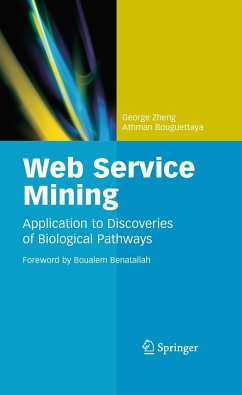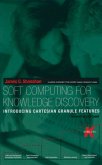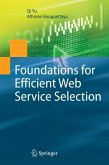Web Service Mining: For Biological Pathways presents the major issues and solutions to mining services on the Web. This book will focus specifically on a reference framework for web service mining, that is inspired by molecular recognition and the drug discovery process; it's known as a molecular based approach.
Web Service Mining: For Biological Pathways will apply the service mining framework and techniques back to biological processes for the discovery of biological pathways. It will link various processes that are involved in an interaction network, as well as providing performance benchmarks for assessing web service mining techniques and algorithms.
Web Service and Mining: For Biological Pathways is designed for researchers and practitioners working in the web service oriented computing industry. This book is also suitable for advanced-level students in computer science and biology as a secondary text or reference book.
The new computing environment enabled by advances in service oriented arc- tectures, mashups, and cloud computing will consist of service spaces comprising data, applications, infrastructure resources distributed over the Web. This envir- ment embraces a holistic paradigm in which users, services, and resources establish on-demand interactions, possibly in real-time, to realise useful experiences. Such interactions obtain relevant services that are targeted to the time and place of the user requesting the service and to the device used to access it. The bene?t of such environment originates from the added value generated by the possible interactions in a large scale rather than by the capabilities of its individual components se- rately. This offers tremendous automation opportunities in a variety of application domains including execution of forecasting, of?ce tasks, travel support, intelligent information gathering and analysis, environment monitoring, healthcare, e-business, community based systems, e-science and e-government. A key feature of this environment is the ability to dynamically compose services to realise user tasks. While recent advances in service discovery, composition and Semantic Web technologies contribute necessary ?rst steps to facilitate this task, the bene?ts of composition are still limited to take advantages of large-scale ubiq- tous environments. The main stream composition techniques and technologies rely on human understanding and manual programming to compose and aggregate s- vices. Recent advances improve composition by leveraging search technologies and ?ow-based composition languages as in mashups and process-centric service c- position.
Web Service Mining: For Biological Pathways will apply the service mining framework and techniques back to biological processes for the discovery of biological pathways. It will link various processes that are involved in an interaction network, as well as providing performance benchmarks for assessing web service mining techniques and algorithms.
Web Service and Mining: For Biological Pathways is designed for researchers and practitioners working in the web service oriented computing industry. This book is also suitable for advanced-level students in computer science and biology as a secondary text or reference book.
The new computing environment enabled by advances in service oriented arc- tectures, mashups, and cloud computing will consist of service spaces comprising data, applications, infrastructure resources distributed over the Web. This envir- ment embraces a holistic paradigm in which users, services, and resources establish on-demand interactions, possibly in real-time, to realise useful experiences. Such interactions obtain relevant services that are targeted to the time and place of the user requesting the service and to the device used to access it. The bene?t of such environment originates from the added value generated by the possible interactions in a large scale rather than by the capabilities of its individual components se- rately. This offers tremendous automation opportunities in a variety of application domains including execution of forecasting, of?ce tasks, travel support, intelligent information gathering and analysis, environment monitoring, healthcare, e-business, community based systems, e-science and e-government. A key feature of this environment is the ability to dynamically compose services to realise user tasks. While recent advances in service discovery, composition and Semantic Web technologies contribute necessary ?rst steps to facilitate this task, the bene?ts of composition are still limited to take advantages of large-scale ubiq- tous environments. The main stream composition techniques and technologies rely on human understanding and manual programming to compose and aggregate s- vices. Recent advances improve composition by leveraging search technologies and ?ow-based composition languages as in mashups and process-centric service c- position.
From the reviews:
"The authors take a unique molecular-based approach to identifying these high-value Web services by leveraging biological processes, specifically with the application of biological pathways. Their inspiration comes from a combination of nature's molecular recognition and the unnatural drug discovery process. ... I recommend this book to data mining practitioners who are always on the lookout for new and innovative approaches that can enable transformation in their field." (Eric W. Yocam, ACM Computing Reviews, June, 2011)
"The authors take a unique molecular-based approach to identifying these high-value Web services by leveraging biological processes, specifically with the application of biological pathways. Their inspiration comes from a combination of nature's molecular recognition and the unnatural drug discovery process. ... I recommend this book to data mining practitioners who are always on the lookout for new and innovative approaches that can enable transformation in their field." (Eric W. Yocam, ACM Computing Reviews, June, 2011)








